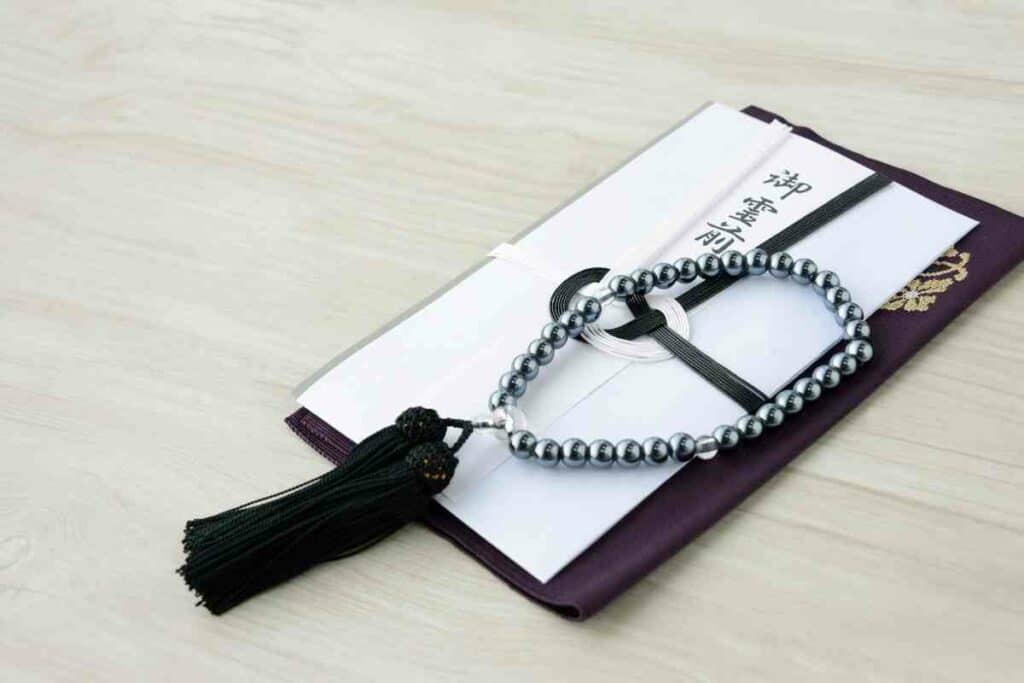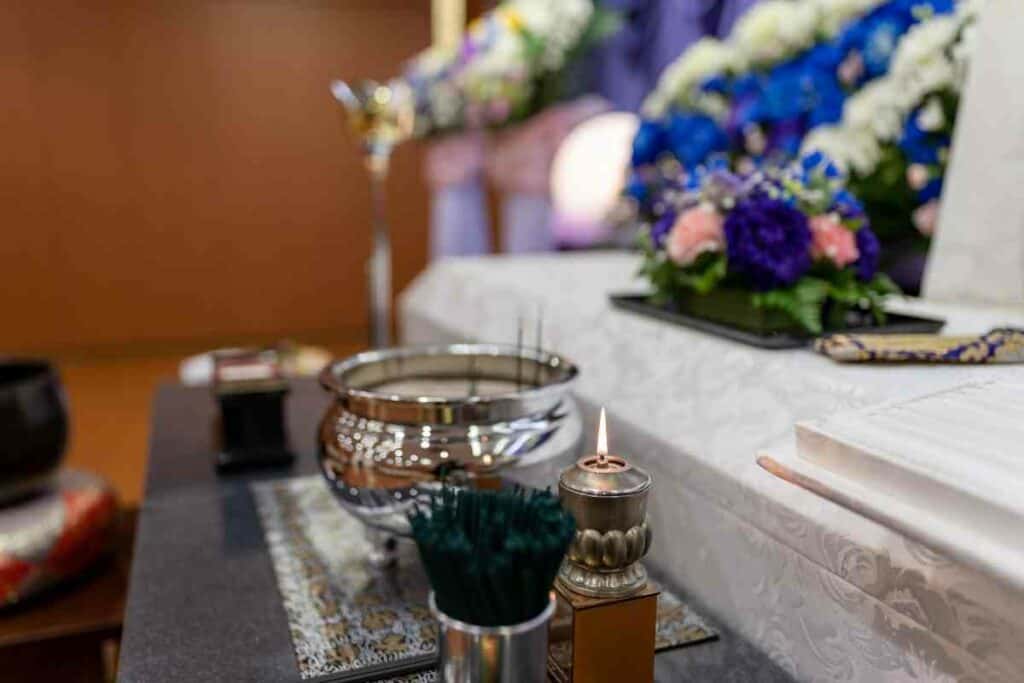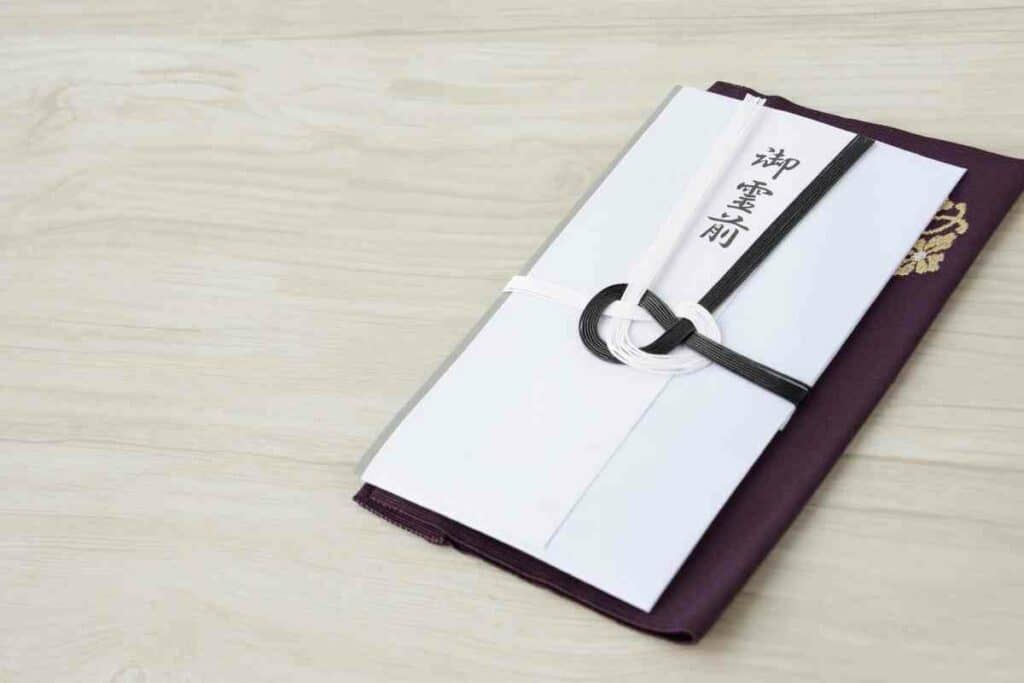Sending condolences is a tradition that spans many cultures, and how it is done often reflects the customs of the sender’s home country.
In Japan, there are both traditional and modern ways to send condolences, and the process can be complex.
Table of Contents
When do the Japanese Send Condolences
Before we can explain when you should send condolences, let’s first take a look at what condolences are.

You’ve probably heard the word condolences come up around funerals, or if you’ve seen a post on social media where someone has lost a loved one.
Condolences are basically a way of expressing your sorrow for someone else’s loss. Condolences could be sent for any sort of loss; a bid on a house, a job, or even a pet.
It’s a way of saying that you’re thinking of them and wishing them strength during this difficult time.
In Japan, it is tradition to send condolences within 100 days of the person’s death.

This is because it is believed that the spirit of the deceased lingers for 100 days before moving on to the afterlife.
Sending condolences is a way of showing respect for the deceased and their family, and it is seen as a duty for those who were close to the deceased.
For Example – If you were friends with someone who recently passed away, it would be expected that you would send condolences to their family.
How to Send Condolences
The best way to send your condolences in Japan is with koden.
Koden is a monetary gift that is given to the family of the deceased as a way of helping them with funeral expenses.
The amount of koden that you give depends on your relationship with the deceased and their family, as well as your financial situation.

If you are close to the family, it is expected that you would give a larger amount of koden.
For example, if the deceased was your parent, you would give a larger sum of money than if they were your grandparent.
How you give koden also depends on your relationship with the family:
- If you are close to the family, it is expected that you would hand the koden directly to them.
- If you are not as close, you can give the koden to a relative or friend who will then pass it on to the family.
You can also send your condolences by giving a contribution in the name of the deceased to a charity of your choice.
This is seen as a way of honoring their memory and is a popular option for those who are not close to the family.
The amount you give depends on how close you were to the deceased and their family.
The minimum amount that is given is usually 5,000 yen up to 50,000 yen. This is around $35 to $350 that goes to the family to help with the costs of the funeral.
Condolence Card
Another option is to send a condolence card.
These cards are available at convenience stores and supermarkets, and they usually have a space for you to write your name and a short message.
There are several types of cards you’ll find at any store, even several types of condolence cards.

If you aren’t familiar, you should ask the store clerk for a goreizen, or a condolence card for a funeral.
You don’t want to accidentally purchase a gobutsuzen, a card that is given after a loved one has been cremated.
Now that you have your card, what are you supposed to write on it?
As a foreigner who may not fully understand the proper way to phrase sentimental statements, especially if you haven’t studied how to write Japanese and only speak the language, you should use a phrase like this:
この度は誠にご愁傷様でした。心よりお悔やみ申し上げます。
This loosely translates to, “I am sorry for your loss, please accept my sincerest condolence.”
Flowers
We’re used to sending flowers with a note of our condolences, but that isn’t as normal in Japan.
There are, however, flowers associated with death that are used by the families of the deceased.
They’ll place yellow chrysanthemums or lilies on the casket during the funeral, or they will leave them by the graves of their loved ones.

If your instinct is to give flowers to the grieving family, there is a way to do so respectfully. Flowers can be given as floral wreaths called hanawa.
These are large floral arrangements that use white or pale colored flowers. The name of the gifter is often attached to the hanawa on a ribbon.
At the end of the funeral, the hanawa is brought to the crematorium to be burned with the deceased.
Before sending hanawa you should contact the family or the funeral hall to see if they are accepting hanawa.
In Japanese Culture – Everything about a funeral should be well organized, and although the intention is sincere, having to find a place for an extra floral arrangement, or figuring out what to do with it may only add extra stress for the family.
Japanese Funerals
Out of respect to the deceased, it is recommended to give your condolences in person at the funeral.
If you’re going to a Japanese funeral you should be prepared.

It’s customary to wear black from head to toe, just like we are used to here.
Except unlike here, there are no exceptions.
If you wear a black dress that has small white flowers on it, you would look appropriately dressed at a funeral here, but disrespectful at a funeral in Japan.
All clothing must be modest; this means shoes must be flat and not decorated, make-up must be muted and you shouldn’t use bright colors, and your clothing shouldn’t be tight fitting.
Final Thoughts
It is considered polite to wait until after the funeral has taken place before sending your condolences, and you should avoid sending flowers or food unless you are specifically invited to do so.
There are many things to consider when sending condolences in Japan, but with a little bit of research and preparation, you can easily navigate this sensitive topic.
- 12 Things Tourists Should NEVER Say in Japan
- Kissing Robot: Exploring the Popularity of the Chinese Kissing App
- Unlocking the Secret Dating Rituals Only Locals Know in Japan
- Samurai Armor: Ancient Protection for Japan’s Elite Warriors
- 10 Amazing Facts About Schools in Japan: Unique Traditions and Educational Practices
- Where can you see snow monkeys in Japan: Best locations and viewing tips









